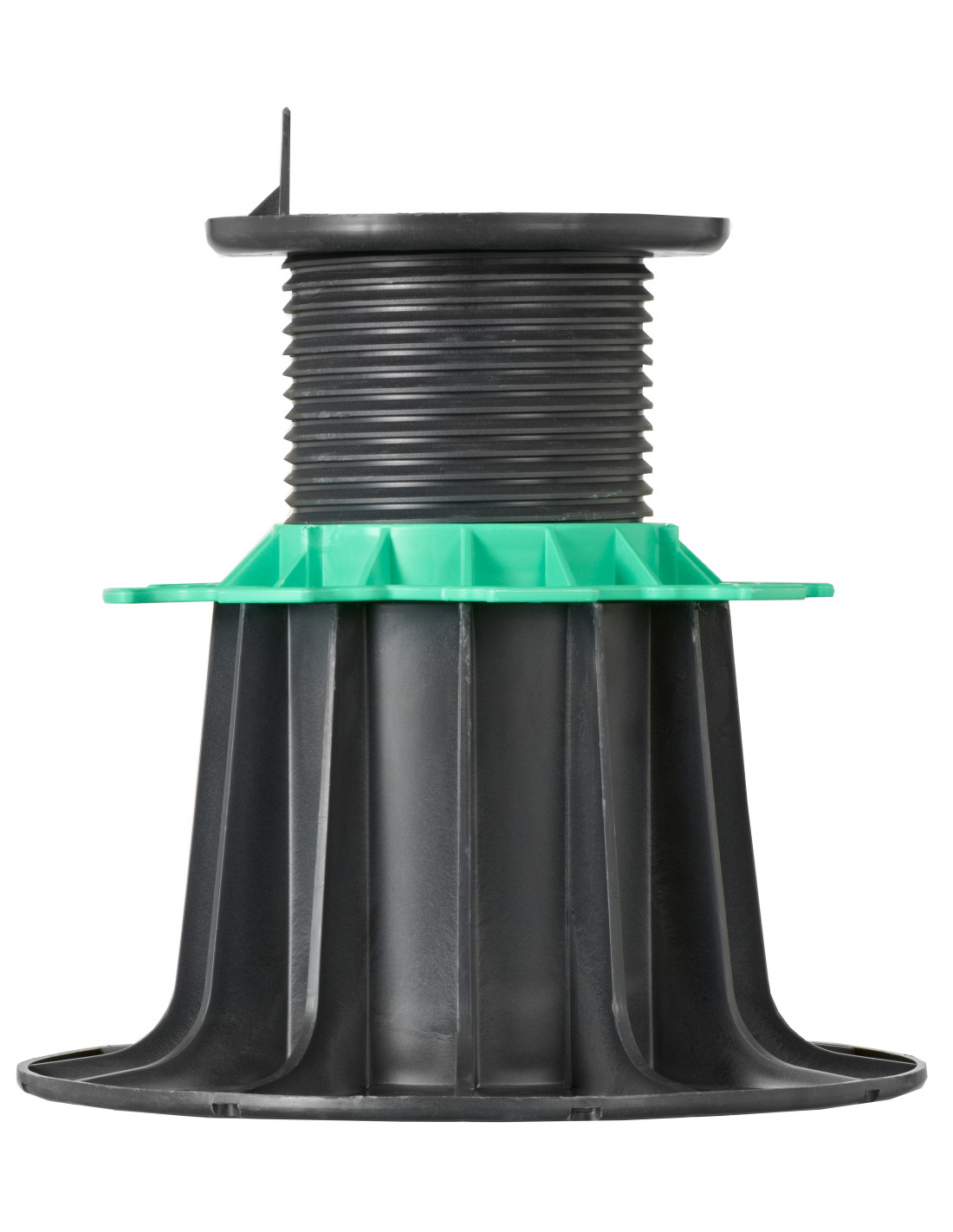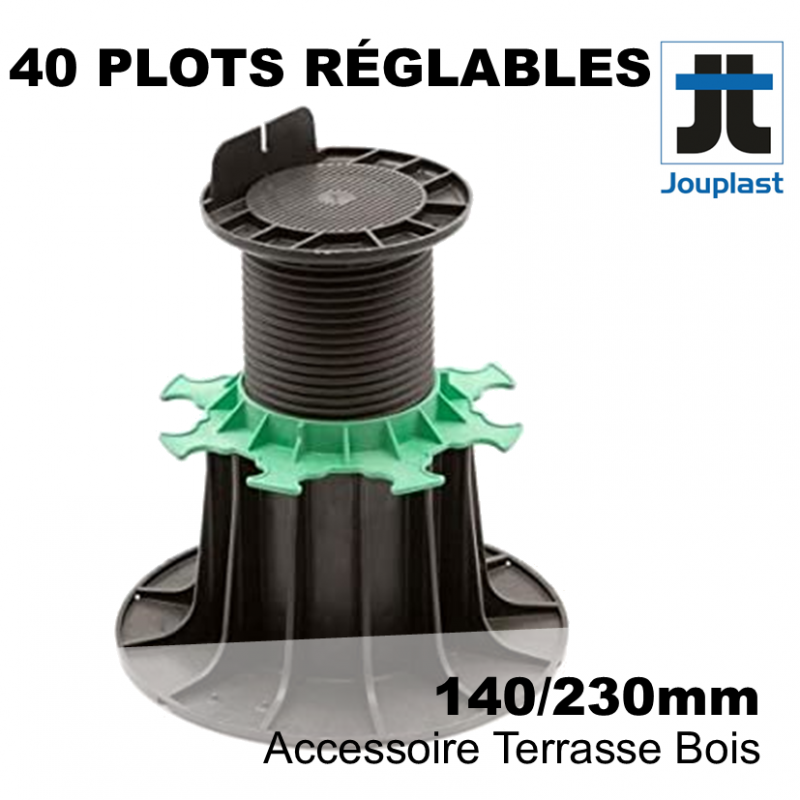Plots Jouplast
- Plots Jouplast Lines
- Plots Jouplast
- Plots Jouplast Prix
- Plots Jouplast 50/80
- Plots Jouplast Autonivelant
- Plots Jouplast 2
- Plots Jouplast Leroy Merlin
Continuing the series on plot: Plot templates are helpful in telling an author the possible events for different sections of the story.
I like to consult these when I’m first thinking of a idea for a novel and when I start a revision. I want to know what is typical for the type story I’m telling and knowing that, I can create variations that will hold a reader’s interest.
Adjustable pedestal for terrace - adjustable slab - 140-230 mm - Jouplast. Are you planning to create a terrace made of tile slabs?In stone, in slabs, in tiles on adjustable pedestal or in gratings, the slabs used must be self-supporting and must be at least 2 cm thick. The adjustable pedestal for slab enables a solid and secure construction to be made for a long-lasting effect, whether the. Jouplast.fr is hosted in France and is owned by Thierry Convert. Jouplast.fr was created on 2010-03-18. Website IP is 95.142.173.122.
Plot Templates
Here are some of the most helpful.
The most simplistic plot template
- Adventure comes to you. A Stranger comes to town.
- You go to Adventure. You leave town.
29 Plot Points introduces the idea of how to structure your novel with plot templates. Make it specific and practical with this book as your guide. For more depth, more examples and explanations, read this book, Start Your Novel: Six Winning Steps Toward a Compelling Opening Line, Scene and Chapter. READ IT NOW.
- Quest. Character oriented story, the protagonist searches for something and winds up changing him/herself.
- Adventure. Plot oriented, this features a goal-oriented series of events.
- Pursuit. This is the typical Chase Plot. Definitely action-oriented.
- Rescue. Another easy to recognize action-oriented plot.
- Escape. A variation on the Rescue is when the protagonist escapes on his/her own.
- Revenge. Ah, character comes back in with this one. Someone is wronged and vows to take revenge.
- The Riddle. Love a good mystery? This is the plot for you.
- Rivalry. Character oriented, this story follows two main characters, one on a downward track and one on an upward track and their interactions.
- Underdog. Everyone is the US roots for the Underdog. This is the plot where the under-privileged (handicapped, poor, etc) triumphs despite overwhelming odds.
- Temptation. Pandora’s Box extended to novel form.
- Metamorphosis. This is a physical transformation of some kind. If you recently watched the movie, “District 9”, you’ll recognize this plot form. It’s Dracula, Beauty and the Beast, or the one I remember best is The Fly.
- Transformation. Similar to the previous, this plot features an inner change, instead of changing the outer form.
- Maturation.Bildungsroman, rite of passage, coming-of-age–these terms all refer to someone growing up morally, spiritually or emotionally. Often, it’s just a hint of growth, or a tiny change that hints at larger changes.
- Love. The classic Boy-meets-Girl plot.
- Forbidden Love. Oh, hasn’t Stephenie Meyer milked this one in her Twilight series? Brilliant use of the forces that keep her characters apart, while still attracting.
- Sacrifice. From the Biblical tale of Jesus to the story of parents sacrificing for their children, this is a staple of literature.
- Discovery. You know those secrets you’ve buried deep in your past? This story digs around, exposes secrets and watches them affect the characters.
- Wretched Excess. When a character is in a downward spiral from alcohol, drugs, greed, etc. this is the plot form.
- Ascension or Descension. A rise or fall from power puts a character into this plot form.
Hero’s Journey: Adapted from Joseph Campbell’s Mythic Hero
- Christopher Vogler’s explanation of the Hero’s Journey is excellent. The basic stages, along with the corresponding character arc are these:
- Ordinary World – Limited awareness of problem
- Call to Adventure – increased awareness
- Refusal of Call – reluctance to change
- Meeting the Mentor – overcoming reluctance
- Crossing the First Threshold – committing to change
- Tests, Allies, Enemies – experimenting with 1st change
- Approach to the Inmost Cave- preparing for big change
- Supreme Ordeal – attempting big change
- Reward – consequences of the attempt
- The Road Back – rededication to change
- Resurrection – final attempt at big change
- Return with Elixir – final mastery of the problem
- You write comedy or humor and want a plot for a novel?
John Vorhaus, in The Comic Toolbox adapts the hero’s journey into a Comic Throughline.
Two Characters Interact.
- Similar to the Hero’s Journey is Peter Dunne’s adaptation to a story in which two main characters influence each other, or one character drastically changes a second. The Emotional Structure details how the characters interact. This could be a sort of Rivalry story from above, a Love story, a Forbidden Love story, or even one of Pursuit, Rescue, or Escape. The main thing here is that two characters act upon each other.
Card’s MICE quotient
- Taking a completely different tack, Orson Scott Card in his book, Characters and Viewpoint, asks what aspect of the story are you most interested in? One strength of this approach is that it tells you where to start and end your story.
- Milieu. When the setting is in the forefront, as it is in many sff stories, you have a milieu story. The setting, culture, world created is the focus of the story. This explains why Tolkein didn’t stop The Lord of the Rings when the battle against Mordor was won; instead, because the focus is on the milieu, he continues on, following the hobbits home, the leaving of the elves and so on, until the Age of Men is established.
- Idea. A question is posed and answered. The classic mystery plot.
- Character. This story begins and ends with pure character.
- Event. Here, Card says that something in the universe is out of balance and the protagonist must right-the-wrong, restore-the-rightful-king, restore justice, defeat evil, etc. If The Lord of the Rings had been this type story, it would have indeed ended when the evil was defeated.
Are there more plot templates? Probably. From these, though, you can see perhaps the usefulness and limitations of using a template. You don’t want a cookie-cutter plot; however, you need to meet the expectations of readers in a certain genre. Templates are the starting point for exploration of the events in a story.
| Plott Hound | |||||||||
|---|---|---|---|---|---|---|---|---|---|
| Other names | Plott Plotthund | ||||||||
| Origin | United States | ||||||||
| |||||||||
| Notes | State dog of North Carolina (designated in 1989)[1] | ||||||||
| Dog (domestic dog) | |||||||||
The Plott Hound is a large scent hound, originally bred for hunting bears. In 1989, the North Carolina General Assembly designated the Plott Hound as the official State Dog.[2][3] The Plott Hound was first registered with the United Kennel Club in 1946. Plott Hounds were recognized by the American Kennel Club in 2006[4] and were exhibited at the Westminster Show in 2008.[5]
Chosen for their tracking and hunting abilities, two Plott Hound puppies have been trained as K9 deputies for the Guilford County Sheriff's Department in North Carolina.[1]
Plots Jouplast Lines
Appearance[edit]
The Plott Hound is generally athletic, muscular, and agile in appearance, with a medium build. Unlike some other hounds, the Plott Hound's skin is not baggy. The Plott Hound is a strongly built yet moderate hound, with a distinct brindle-colored coat. Its appearance suggests the capacity for speed, stamina and endurance.
May have an identification mark on it that is used to identify the dog when hunting. Such a mark is not penalized in conformation shows.
Coat and color[edit]
The Plott Hound's fur should be fine to medium in texture, short or medium in length, and have a smooth and glossy appearance. According to the National Plott Hound Association, the dog's fur should be brindled. Brindled is defined as 'Finely streaked or striped effect or pattern of black or tan fur with fur of a lighter or darker background color. Shades of colors accepted: yellow brindle, red brindle, tan brindle, brown brindle, black brindle, grey brindle, and maltese (slate grey, blue brindle).' Acceptable colors are any of the above-mentioned brindles. Black with brindle trim is the alternative. The Association dictates that while some white on the chest and/or feet is permissible, white found anywhere else is a fault.
Size[edit]
A Plott Hound should measure approximately 20 to 25 in (55 to 71 cm) at the withers for males, 20 to 23 in (53 to 63 cm) for females. Males should weigh 50 to 60 lb (23 to 27 kg). Females should weigh 40 to 55 lb (18 to 25 kg).[6]
History[edit]
Of the seven breeds of United Kennel Club (UKC) registered coonhounds, the Plott Hound is the only that does not trace its ancestry to the foxhound.
The Plott Balsams, a mountain range in North Carolina, are named for the Plott family, whose ancestor, (Johannes) George Plott (c. 1733-1815), immigrated to North Carolina in the late 18th century from Germany. The Plott Hound breed of hunting dog is also named for the Plotts.[7]
Plots Jouplast

Plots Jouplast Prix
The ancestors of today's Plott Hounds were used for boar hunting in Germany. Originally from Germany, in 1750 Johannes 'George' Plott emigrated to the English colony of North Carolina. He brought a few wild boarhounds (five Hanoverian Hounds, used for bear and boar hunting)[6] with him. These dogs had been bred for generations for their stamina and gameness. George and his wife Margaret with their family settled in the mountains of western North Carolina. Though there is no evidence that Plott ever went to western North Carolina, his son Henry settled there around 1801 to 1810 (as the census discloses) and was responsible for the Plott Hound's later development.
Plott supposedly kept his strain entirely pure, making no outcrosses. In 1780, the Plott Hound pack passed into the hands of Henry Plott.[8]
Shortly after, a hunter living in Rabun Gap, Georgia, who had been breeding his own outstanding strain of 'leopard spotted dogs' heard of the fame of the Plott Hounds and went to North Carolina to see for himself. He was so impressed that he borrowed one of Montraville Plott's top stud dogs for a year to breed to his own bitches. This single cross is the only known instance of new blood being introduced into the Plott Hound since it first went to the US.[citation needed] Eventually Montraville decided not to continue this breeding practice and gave all of the leopard dogs away, returning to his original breeding practices.[citation needed]

Other crosses possibly took place around 1900. G.P. Ferguson, a neighbor of the Plott family in North Carolina in those days, was a major influence on the Plott Hound breed.[citation needed] He made a careful study of the Blevins hounds and the Cable hounds of that era. The extent to which he used these bloodlines in his Plott Hound breeding program is not known.[citation needed]
References[edit]
| Wikimedia Commons has media related to Plott Hound. |
- ^ abLibby Bagley; Myra Wright (January 2018). 'NC Author is an Advocate for our State Dog'. Carolina Country (Volume 50, Number 1). NC Electric Cooperatives. p. 26. Retrieved January 3, 2018.
- ^'Plott Hound: The State Dog'. North Carolina History Encyclopedia. John Locke Foundation. Retrieved 3 January 2018.
- ^McCoy, Erin Kathleen. 'North Carolina State Dog'. State Symbols USA. Retrieved 16 April 2012.
- ^'Plott Quick Facts'. Dognation.net. Retrieved 16 April 2012.
- ^Woodward, Richard B. (12 February 2008). 'Great Plott'. Slate.com.
- ^ ab'Plott – American Kennel Club'. Akc.org. Retrieved 2015-06-03.
- ^Marcus Simpson, Harold Pratt, Birds of the Blue Ridge Mountains (University of North Carolina, 1992), p. 182.
- ^North Carolina Office of Archives and History. 'Plott Hound Historical Marker'. StoppingPoints.com. Retrieved 2009-04-08.
Bibliography[edit]

- Strike and Stay: The Story of the Plott Hound, Bob Plott, The History Press, 2007, ASIN: B0061S3YLW, pp. 25– 30
External links[edit]
Plots Jouplast 50/80
- Official entry on American Kennel Club
- Official entry on United Kennel Club
- Plott Hound at Curlie
Plots Jouplast Autonivelant
Plots Jouplast 2
